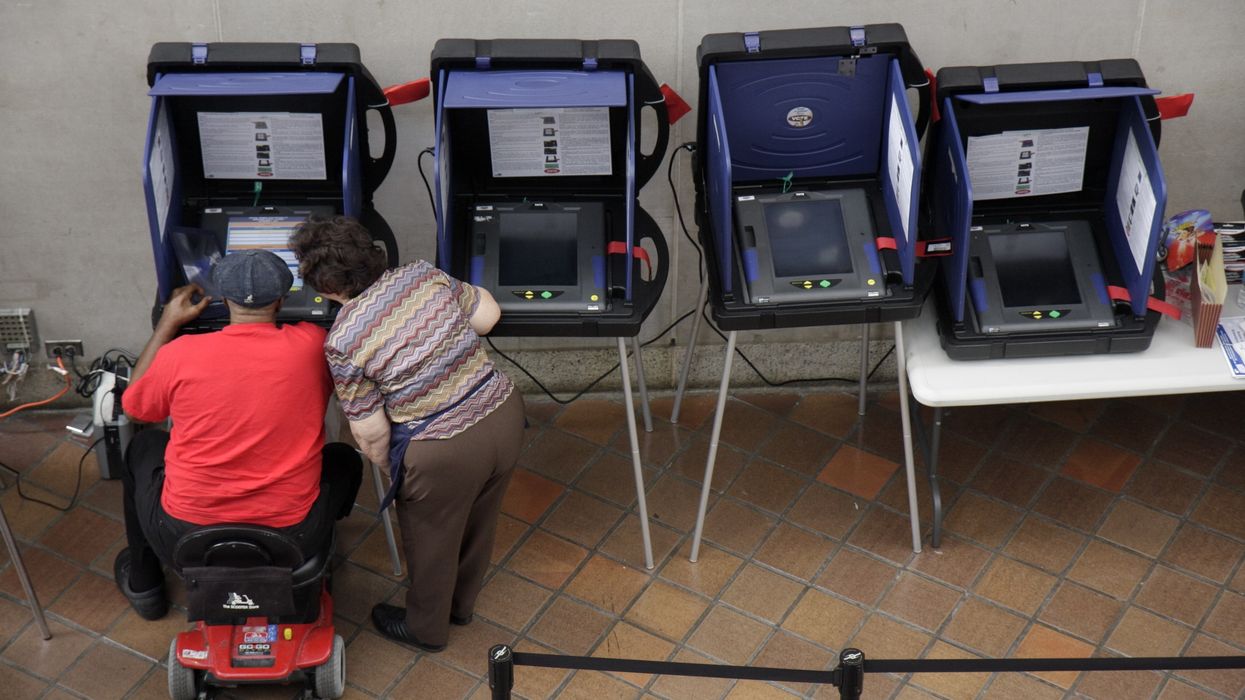Blame the Escalating Gerrymander Wars on Chief Justice John Roberts
Nobody has done more damage to US democracy and voting rights in the 21st Century than this one despicable jurist.
America is currently at war over partisan gerrymandering. The Republican-controlled Texas legislature has just gerrymandered voting districts to create five more safe Republican US House seats, as demanded by Trump.
Then Missouri Republicans were ordered by Trump to enact a gerrymander to increase the states' disproportionate Republican minority from 6-2 to 7-1 by cutting Democratic-leaning Kansas City voting districts down the middle. Now JD Vance is urging Indiana Republicans to gerrymander the only two remaining Democratic House districts out of existence.
In response, California Governor Gavin Newsom has proposed a ballot measure that would temporarily suspend California's independent redistricting commission until 2030 and let the Democratic legislature redistrict Republicans out of five seats to match what Republicans have done in Texas.
A large majority of voters nationally don't think partisan gerrymandering should be legal. According to a recent YouGov poll, 69% of Americans think partisan gerrymandering should be illegal and only 9% think it should be legal.
Chief Justice John Roberts (and all of his Republican colleagues on the Supreme Court) disagree with this vast majority of Americans. In 2019, Roberts' 5-4 majority opinion in Rucho v Common Cause (joined by the four other Republicans on the Court) held that federal courts do not have the constitutional power to prevent partisan gerrymandering and restored blatantly partisan gerrymanders in North Carolin and Maryland.
Since Roberts' decision, partisan gerrymandering has exploded. According to Michael Li of the Brennan Center, partisan gerrymandering has given Republicans 16 extra seats in the House. Without that, Democrats would have a House majority and Republicans would not be able to pass the so-called "big beautiful bill" which has led to a government shutdown. As the Brennan Center states, "Gerrymandering decided House control."
Roberts' opinion conceded that partisan gerrymandering is “incompatible with democratic institutions” and “leads to results that reasonably seem unjust.” But Roberts then invented a procedural technicality to bar Federal courts from doing anything about it or to uphold the Constitutional principle of "one person, one vote." Roberts claimed that partisan gerrymandering is a so-called "political question" that Federal Courts have no right to question and must be left to the states. Of course, when one party controls the state legislature, they have every incentive to draw voting districts to guarantee they never lose political power, no matter what the view of the voters is. Voters don't get to pick their own legislators. Instead, legislators get to pick their voters. In her dissent—joined by Justices Ginsburg, Sotomayor, and Breyer—Justice Kagan wrote:
"For the first time ever, this Court refuses to remedy a constitutional violation because he thinks the task is beyond judicial capabilities. And not just any constitutional violation. The partisan gerrymanders in these cases deprived citizens of the most fundamental of their constitutional rights: the right participate equally in the political process, to join with others to advance their political beliefs, and to choose their political representatives. In so doing, the partisan gerrymanders here debased and dishonored our democracy...enabl[ing] politicians to entrench themselves in office as against voters' preferences...They encouraged a politics of polarization and disfunction."
Is it any wonder that a NY Times/Siena poll taken last week found that only 33% of voters believe that America's political system can still address the nation's problems, while 64% believe the political system is too politically divided to solve the nation's problems?
As former Senate Judiciary Committee counsel Lisa Graves argues in a new book, "[i]n the last twenty years the US Supreme Court has radically curtailed voting rights, undermined anti-corruption measures, encouraged extreme political gerrymandering, restricted the regulation of guns, and obliterated the constitutional right to control one’s reproductive choices. This transformation was orchestrated by a billionaire-backed reactionary political movement, whose interests Chief Justice John Roberts has been all too willing to serve."
Citizens have no power to overturn a US Supreme Court decision. However, California citizens have the ability to equalize Texas Republicans' gerrymander of five House seats. On November 4, they can pass Proposition 50 which lets the State legislature temporarily draw new congressional district maps through 2030, at which point the Independent Citizens Redistricting Commission would resume control of redistricting, and supports nonpartisan redistricting commissions nationwide.
It won't completely block John Roberts' 20-year long project to undermine democracy and judicially enact the increasingly MAGA Republican agenda. (It wouldn't be an exaggeration to call it a "judicial coup".) Indeed, this week SCOTUS heard oral arguments in a case where it appears that Roberts will lead the Republican majority to overturn Section 5 of the Voting Rights Act which protects the right of Black voters to have electoral representation. Such a ruling could likely flip as many as 19 House seats from Democratic to Republican, cementing a Republican House majority for the foreseeable future, regardless of the will of the voters.
Passing Proposition 50 is one thing Californians can do to fight back against Justice Roberts' undemocratic judicial campaign, which has helped enable Trump's authoritarianism. Mail-in ballots have already been sent out so California voters can cast "Yes" votes for Proposition 50 from now until November 4. Beyond that, thanks to John Roberts and his Republican colleagues on SCOTUS, other Blue states will have to be brought into the gerrymander wars and enact their own partisan gerrymanders to balance Republican gerrymanders to the extent possible.


